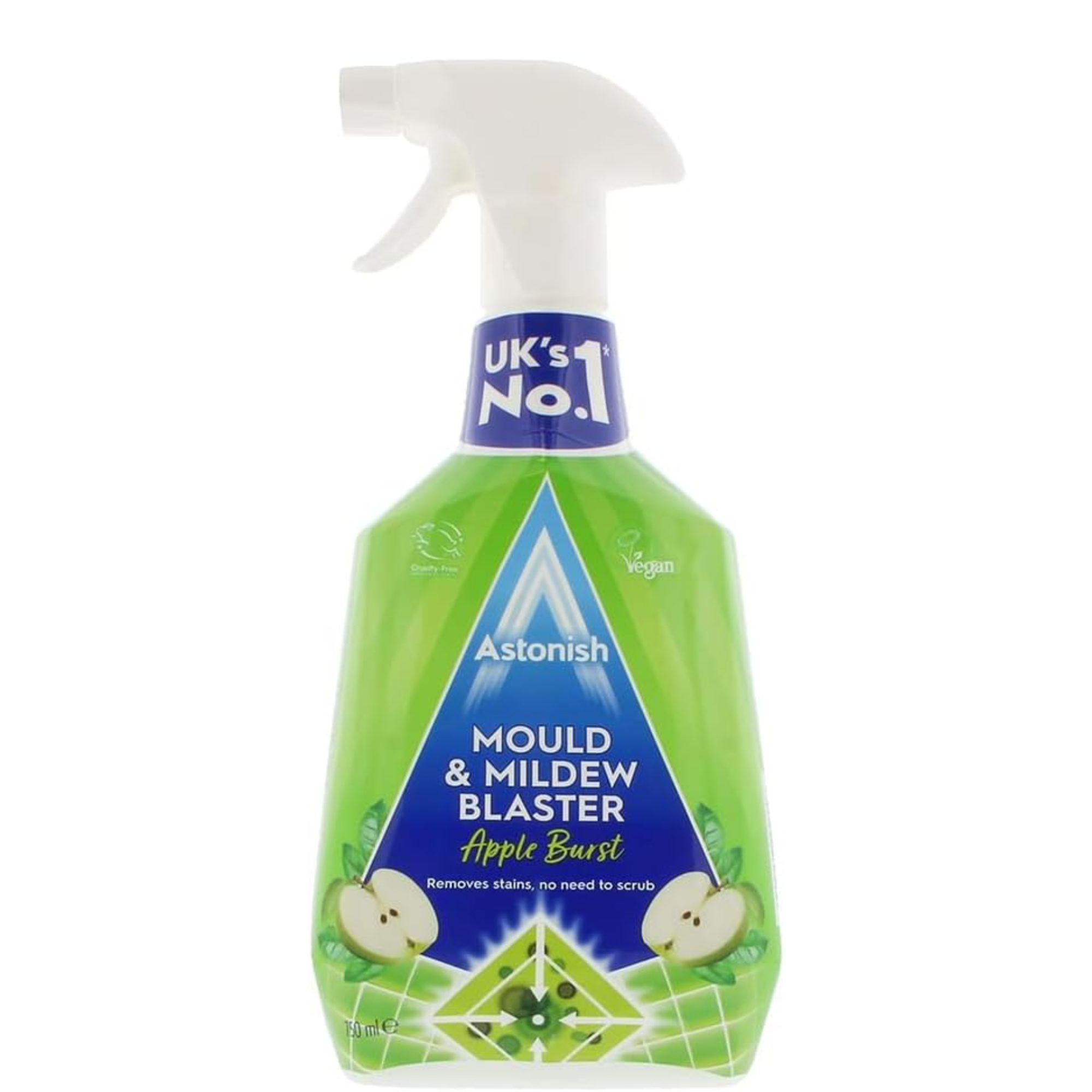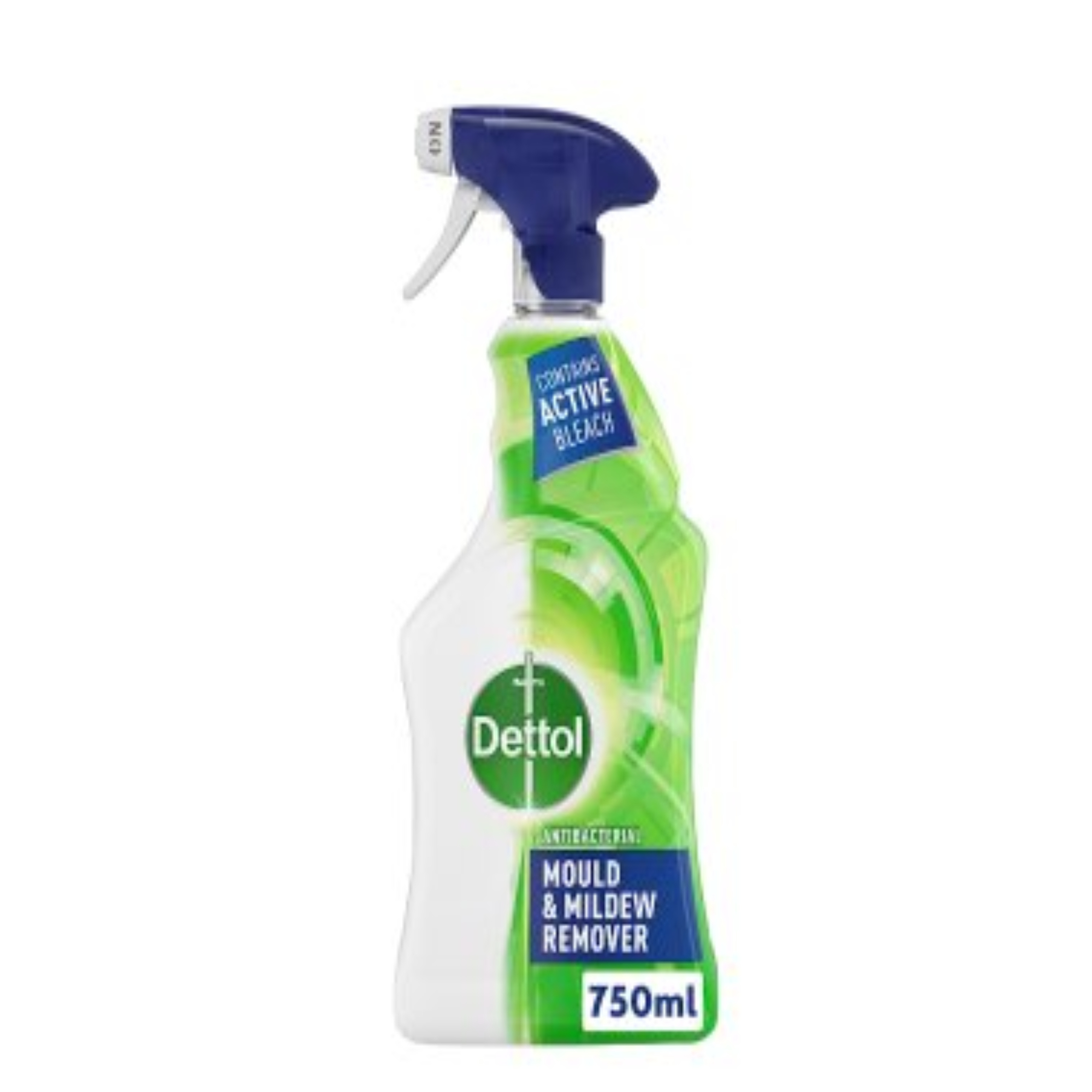How to remove mould from ceilings: Practical cleaning solutions plus expert advice to prevent its return
Mould making its mark on your ceilings? Here's how to banish the unsightly stains and keep them at bay
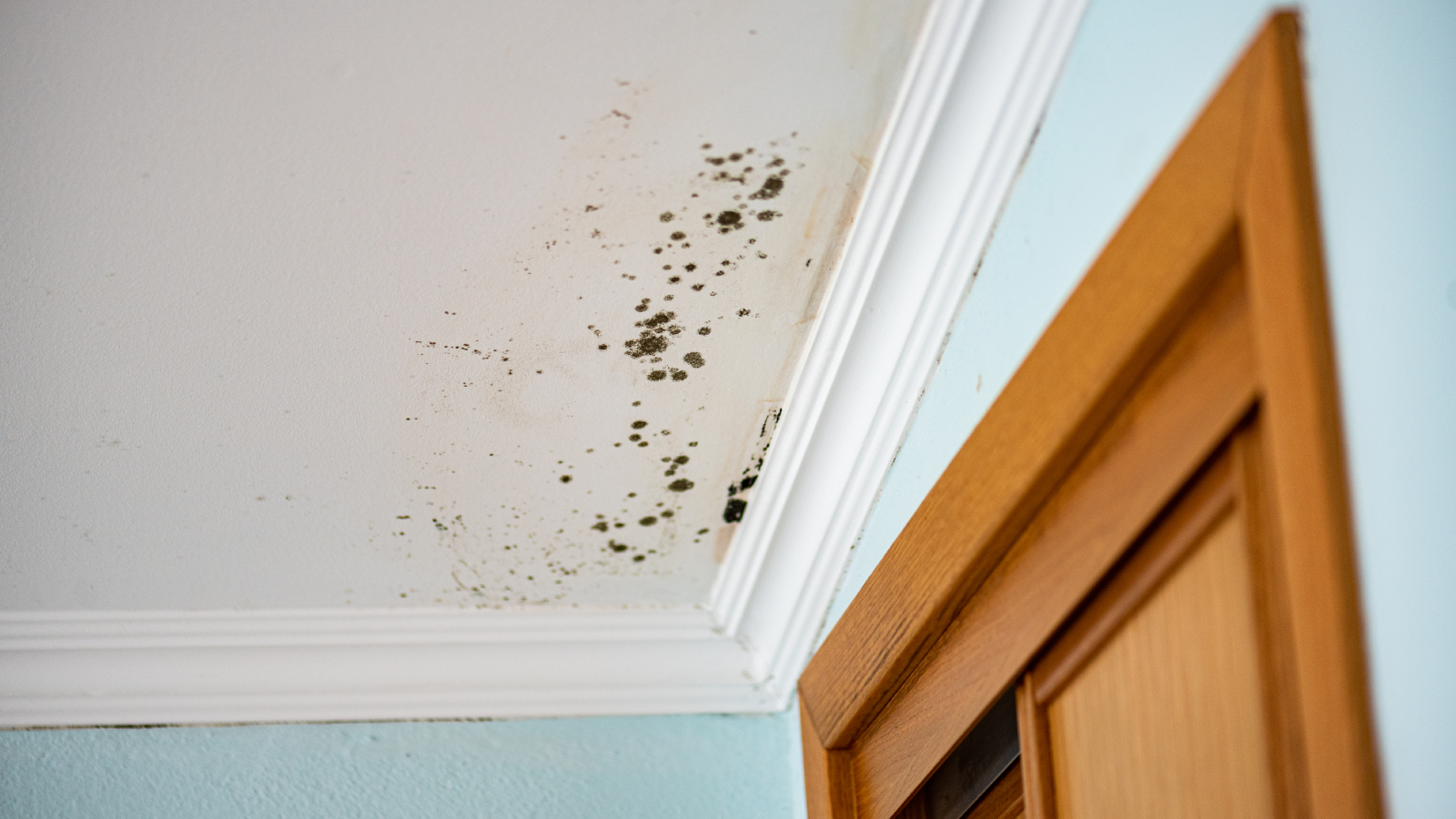
If you're wondering how to get rid of mould from ceilings, you're not alone. Homes up and down the country experience this very issue and it's something experts are asked to provide advice for on a regular basis.
The good news is, although the location of ceilings can make mould removal a little more tricky, you can still used tried and tested techniques to banish it from your home.
However, regardless of where it's appeared, removing mould from your home is also vitally important. The associated health risks ranging from respiratory illnesses to allergic reactions are to be avoided at all costs, which is why we're here to help find out how to remove mould from ceilings.
Practical solutions for removing mould from a ceiling

Need more advice or inspiration for your project? Get two free tickets to the Homebuilding & Renovating Show.
Our experts have advice on the best methods to try in your own home to remove unsightly mould. Many of these can be equally effective for removing mould on windows and walls too.
It's worth noting that once you've got on top of the issue, it's also important to put in place preventative methods to ensure the mould problem doesn't reoccur.
Before you start
Although the most common causes of mould are poor ventilation and insulation, if you've spotted the unsightly spores starting to appear on your ceiling and nowhere else, it's worth some extra investigation say the experts.
“When you start treating a ceiling for mould there are several steps to take to make sure the mould does not come back," says Andy Simms, a property renovation expert from MyBuilder.com.
"First, always check there isn’t a small leak from the roof or any pipework running above or within the ceiling. This might not be an easy task if you need to look under floorboards so you might need to get a professional to visit.
"If an area has been subjected to long-term mould, it's likely whatever lies beneath has been subject to rot or decay which can sometimes lead to issues with structural timbers or plasterboard. If this is the case, it is likely the affected areas will need complete exposure, allowed to 'breathe' and then treated or replaced meaning a much bigger job.

With almost a decade of experience on the front line in construction as a multi-trader, Andy has extensive skills and knowledge to help tackle most problems in the home, including removing mould.
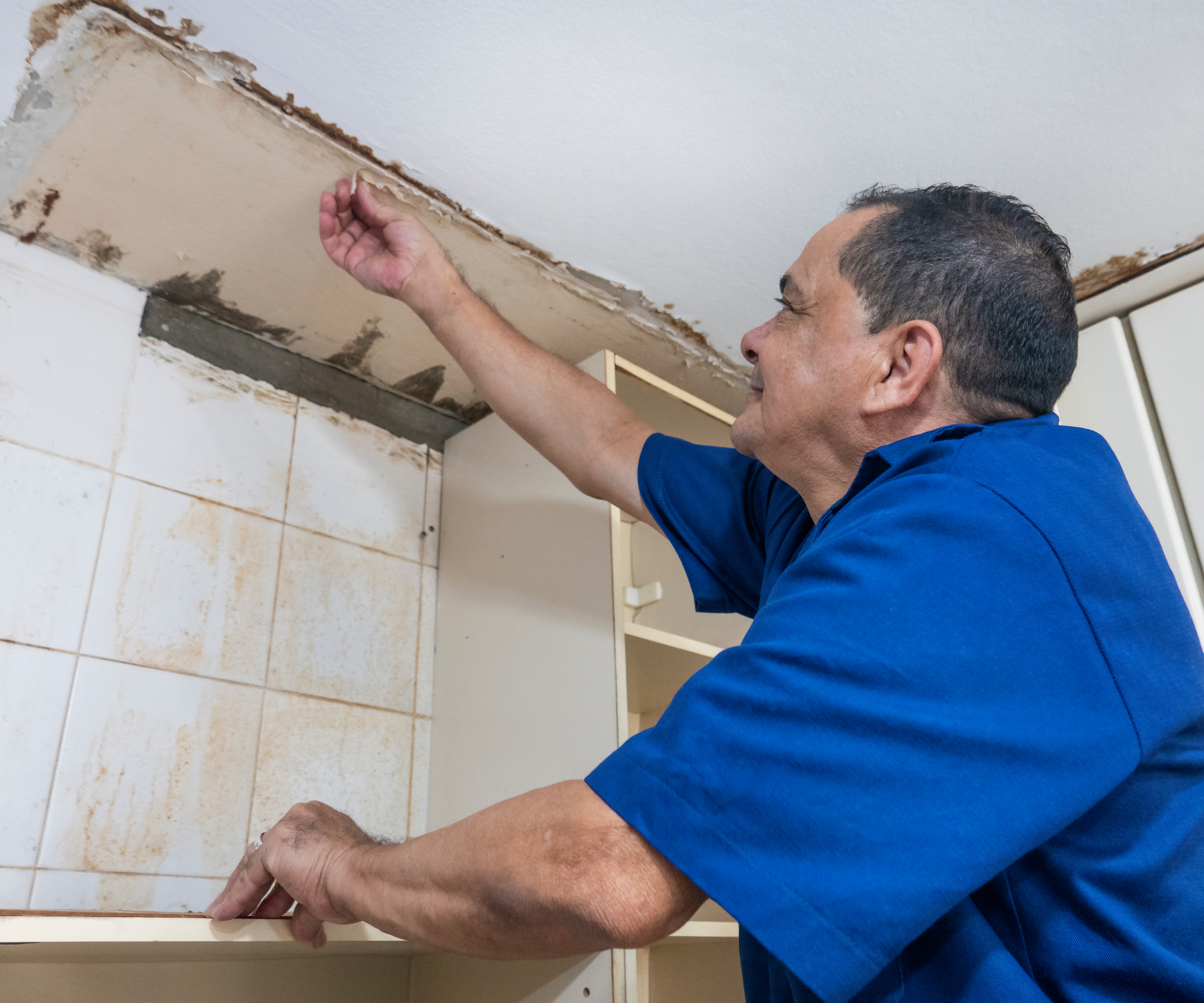
Prepare the area
"Ventilating the area affected will help almost instantly alleviate the damp smell that comes with mould, so opening all windows and doors should be the first step," says Izabela Janiec, a branch manager for Daily Poppins.
This will not only help dry up the mould, but also ensure the spores do not linger in the air when you are cleaning them. If you are using a specific mould removal spray or cleaning product, most will also advise they should only be used in well ventilated rooms as the fumes are considered toxic.
And even if you are using a more eco-friendly removal method, wearing protective items is also recommended when removing mould from ceilings.
Henry Patterson, cleaning expert at Housekeep.com says, "gloves, a mask and protective eyewear are a must when removing mould from a ceiling to avoid coming into contact with mould spores. This is particularly important if the mould is extensive and/or you suffer from a respiratory condition such as asthma."

Henry Paterson is a cleaning expert and digital marketing manager at Housekeep.com, a home cleaning service agency that uses smart tech to match homeowners and companies with local cleaners and tradespeople.
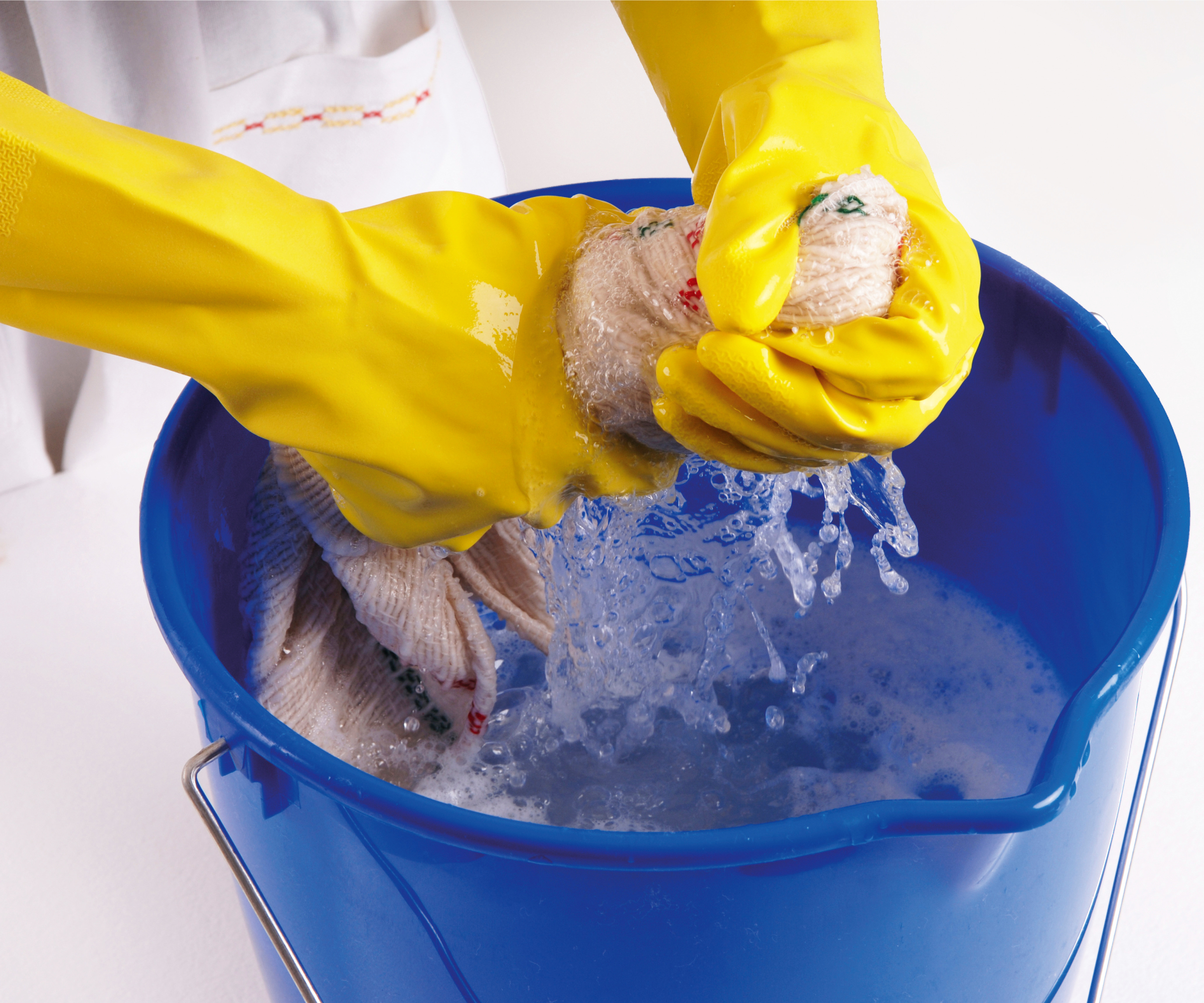
3 ways to remove ceiling mould
From readily available cleaning products to more natural solutions, there are several effective options for getting rid of ceiling mould.
1. Spray with a mould removal product
If you prefer to fight your mould issues with a chemically based product, Homebuilding & Renovating's web editor, Amy Willis, is a fan of HG Mould Spray, available from Amazon.
After experiencing mould on her bathroom ceiling – a self-confessed issue caused by not using the correct paint – Amy tried three products to clean the mould off a ceiling and recorded the results.
Rating HG mould removal as the most effective product, Amy says it was easy to use and although the recommended wait time is 30 minutes, for her it worked quicker.
"I had an old bottle lying around, sprayed it on, waited just over five minutes and wiped and off it came."
The downside? It does leave a chlorine-like smell, but if you have your windows open as advised, this should clear relatively quickly.
Henry Patterson is also a fan of specialist mould removal products. "These are super simple to use," he says. "Double-check the specific instructions for the product that you’re using – but it’s usually just a case of spraying and leaving for 15 minutes or so and then washing clean with water and a damp microfibre cloth.
"Dy thoroughly with a clean towel which should go straight to the wash," he adds, noting you may need to repeat the first stage of the process multiple times to remove the mould entirely.
His top tip? "An old toothbrush will come in handy for removing any particularly stubborn mould."
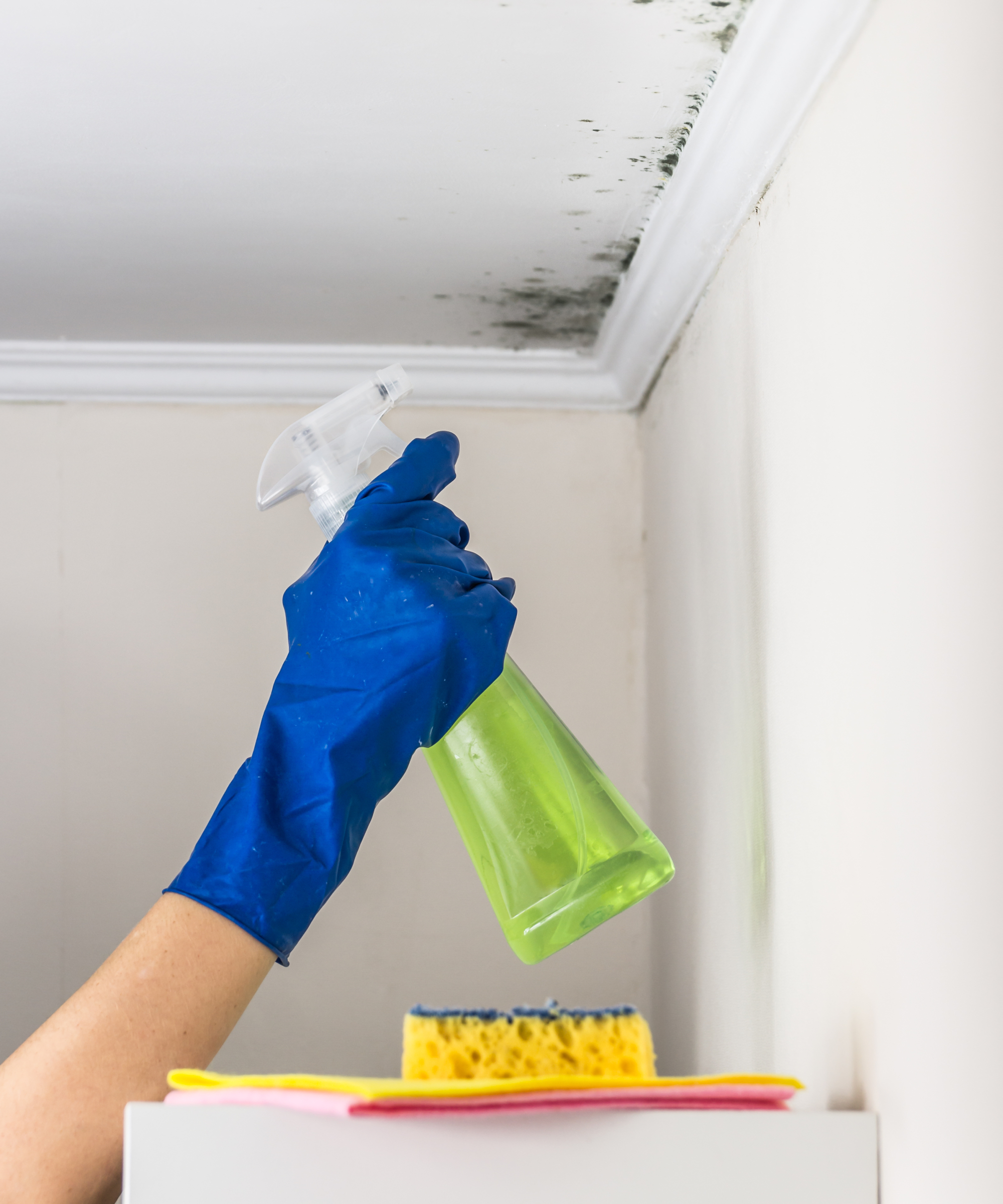
Personally, I've also had great results using Dettol Mould & Mildew Remover, available from Waitrose, and Astonish Mould & Mildew Blaster, from Amazon, both of which have banished mould on ceilings, tiles, grout and sealant in bathrooms.
In both instances, I've always sprayed on the product and left it around 15-20 minutes before wiping it away – although most of the time, you can see the spores physically disappear in front of your eyes which is always quite satisfying to watch.
If, however, your bathroom ceiling has more than just a few spores and there is already paint peeling away Andy advises, "first remove any flakey paint or wallpaper and then use a mould-removing solution on the affected area.
"Scrub the mould using the rough side of a scouring sponge (make sure it is one that isn't bright in colour as it may stain) and allow the ceiling to dry."
Our favourite mould removal products
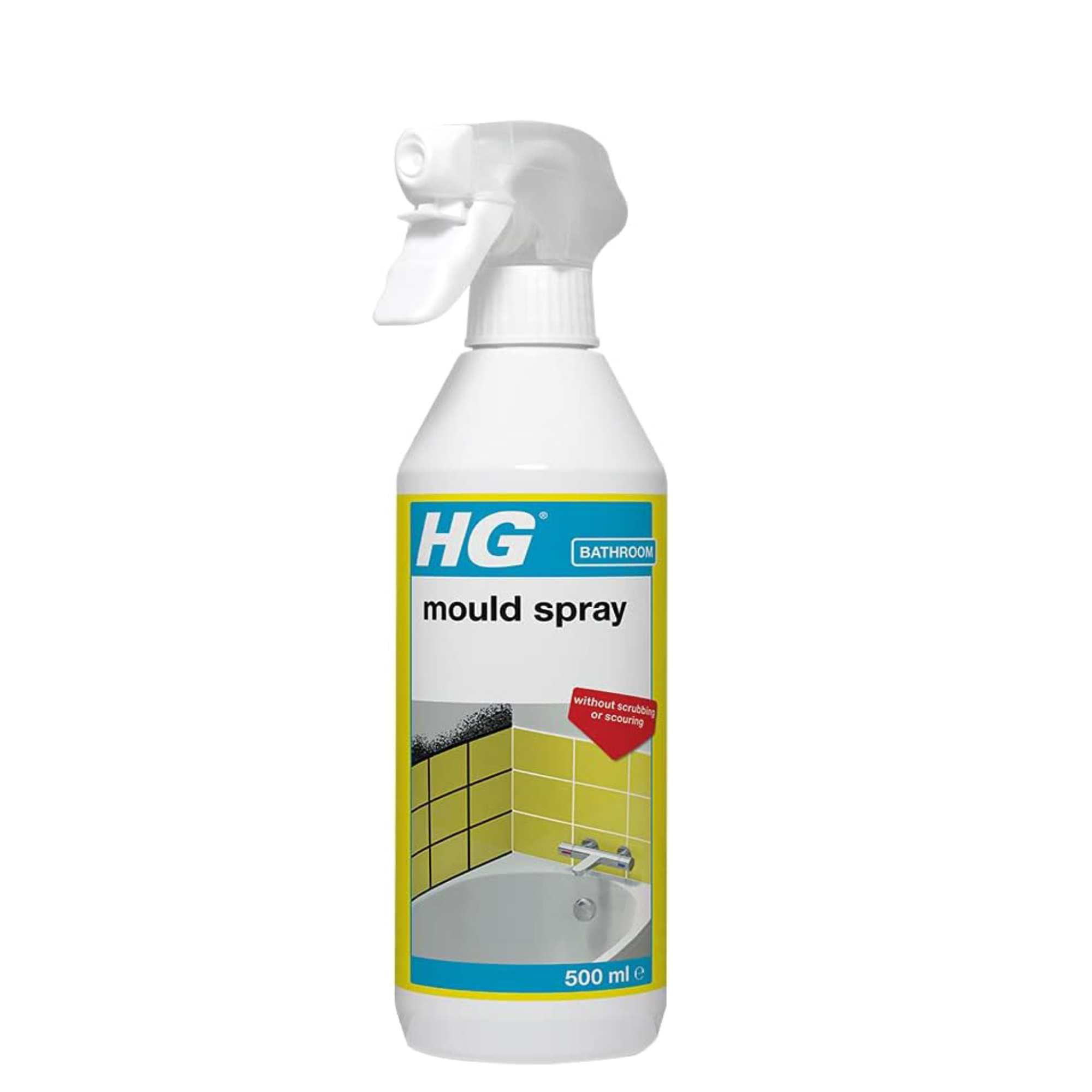
HG Mould spray removes mould from plastered walls, ceilings tiles, bathroom seals, windows and more. Suitable for indoor and outdoor use.
2. Use clear household bleach
If you don't have any removal spray to hand another option to remove mould from a ceiling is with household bleach.
Before grabbing the nearest bottle of bathroom bleach though, don't forget to check it is clear. Anything that is coloured is not suitable as it will likely stain your ceiling, even when diluted.
Although you may be tempted to consider using it neat, the recommended approach is to dilute 250ml with water in either a bowl or spray bottle.
As with the specialist product, spray on, leave to settle and then wipe away with a damp cloth. Once again, the downsides are you'll be left with the chlorine smell and according to Amy, you may also find it takes longer to work.
"I applied it at the recommended strength," says Amy, "but found myself tipping more bleach in as the mould wasn't disappearing particularly quickly. But after leaving it for a good 15 minutes and a bit of scrubbing, the results were much improved but not completely gone."
Avid fans of celebrity cleaning expert, Mrs Hinch, also share their own views on using bleach to remove mould from a ceiling on their dedicated Facebook page.
Some suggest bleach only feeds mould and rather than removing it simply makes it white. Other methods proposed include soaking white paper towel sheets in the bleach solution, applying them to the ceiling and leaving overnight, as well as spraying diluted bleach or a specialist product onto a paintbrush before applying it to the affected areas.
Henry Patterson, on the other hand, is not a fan of bleach. "You can use household bleach to remove black mould," he agrees, "but I wouldn’t recommend this method. Bleach is difficult to work with and can easily cause damage when spilled."
3. Use eco-friendly baking soda or white vinegar
If you prefer to follow author and TV presenter Michelle Ogundehin's approach to a chemical-free life then you may find your kitchen cupboard home to some mould removal products. I once tried her trick of using citric acid as a toilet and bathroom cleaning solution and was hooked!
"Distilled white vinegar can be an effective home remedy for removing black mould from ceilings and other surfaces," says Henry. "Apply from a spray bottle or on a clean cloth. Leave for at least one hour and wash off with a cloth or soft-bristled brush."
"Vinegar is also gentler than bleach," adds Izabela Janiec, "so is less likely to cause damage."
Baking soda (also known as bicarbonate of soda) is also another eco-friendly agent in the bid to clean in a more natural way. If you're using it on an area such as uPVC, you can make a paste using two parts baking soda to one part white vinegar. Simply apply the paste to affected area and leave it for around an hour before wiping away.
On ceilings, this is less practical as the paste is likely to fall off. Instead, make up a solution with lukewarm water in a bowl or spray bottle, apply, leave for around 20-30 minutes and wipe away.
The downsides? It may not work as effectively if the mould has really taken hold and distilled vinegar will leave a residue smell you may find unpleasant.
Recommended ratios:
- Two cups of water to a quarter teaspoon of baking soda
- One part vinegar to two parts water
Izabela leads her team of cleaning experts by drawing on years of invaluable experience in customer service and the food industry. She appreciates the profound impact a clean environment can have on both physical and mental well-being.
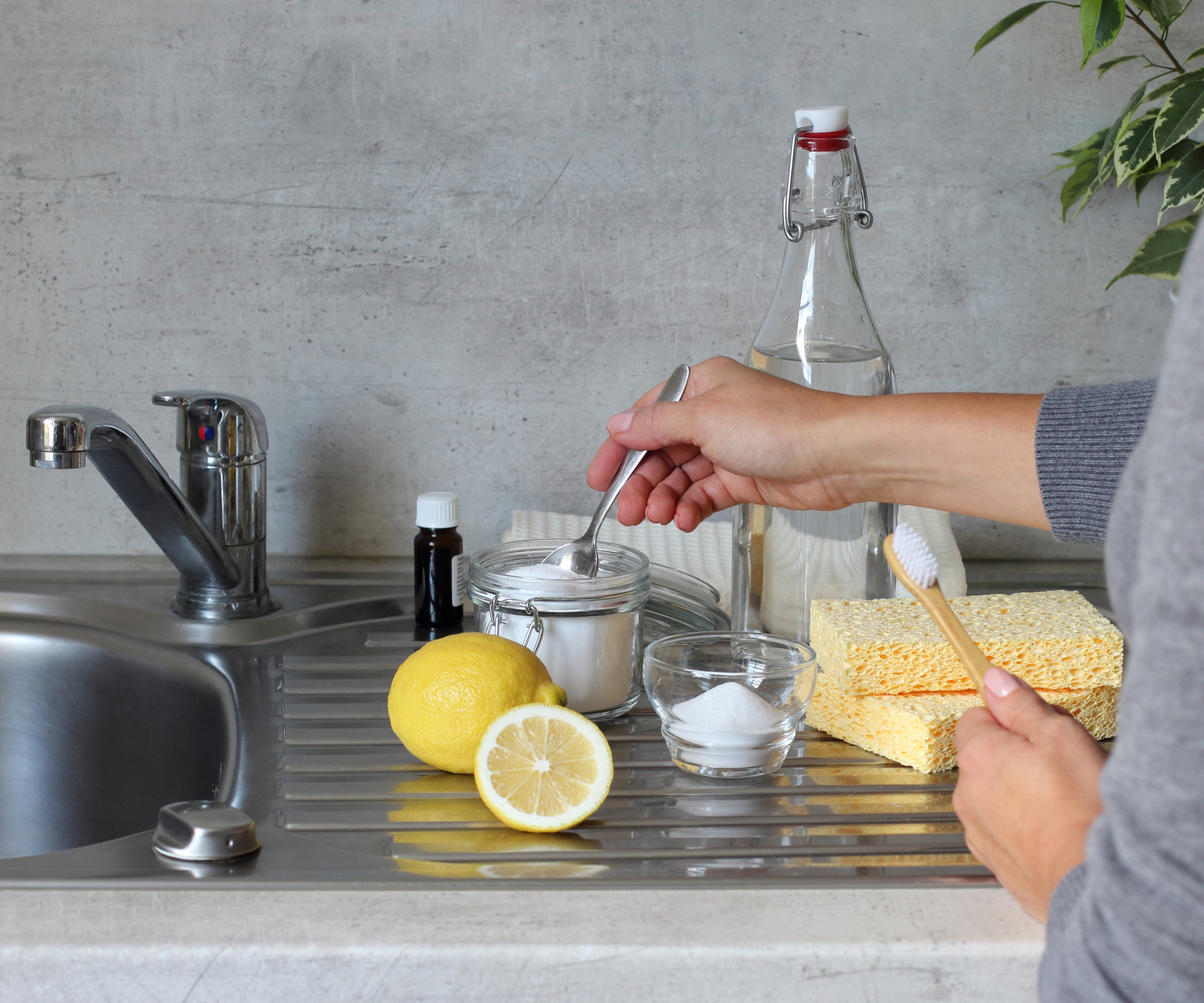
Causes of mould on ceilings
Mould grows where there is moisture, so making sure mould doesn't grow on your ceiling is about tackling the cause of the moisture.
If the mould is appearing on a ground floor ceiling, this might be a case of checking pipework in the home, or the seals around your bath, shower, sinks and toilet, as well as the pipework there too if the ceiling is below a bathroom.
If the mould-covered ceiling is on the first floor of your home then you'll need to check the loft space to make sure there isn't a leak from your roof or similar.
Assuming you haven't got a leak, then the cause of the mould is likely to be a lack of adequate ventilation. Gordon Winchester, a ventilation control expert at Damp and Mould Control, says the drive for energy efficiency has left many homeowners with not enough air flow through in our homes, and this is exacerbated by how we use our homes.
"The warmer the air, the more moisture it holds. In the winter months when it's colder outside, you'll find the warmer air in the home will absorb the moisture that you produce by boiling the kettle, cooking the spuds, or doing the washing and hanging the clothes over the banister," he says.
"All these things introduce moisture into the air within the home and a lot of the time it can't escape and it just builds up and collects. When you go to bed at night and the heating goes off, the temperature starts to fall and as the temperature falls it reaches a point where it can no longer contain the moisture it has absorbed. It then condenses out."
Gordon explains that this tends to settle on surfaces, such as walls, windows and ceilings, leaving an appealing environment for mould spores that are already "free flowing" in the air around us.
"They settle in the condensed moisture, which can be as little as one micron thick. It might be a very thin sheen of moisture but to the mould spores it's like the deep blue sea. They can then use trace organic materials in the paint or other materials as a food source and when you don't get air flow over the areas to dry it, you'll get mould growth," he says.
Getting good air flow and ventilation in your home is therefore key. You can do this by adding items such as bathroom extractor fans and dehumidifers, such as this Meaco 20L dehumidifer on Amazon.
How to prevent ceiling mould from returning
Unfortunately, while your clean ceiling may give you joy at first, if you haven't dealt with the cause of the problem, it's likely you will need to repeat the procedure on a regular basis – especially during the colder winter months.
- Tackle at source
"The best way to prevent mould from returning is to tackle it at source," says Henry. "So this means addressing any leaks, condensation or other sources of moisture that are causing the mould." Izabela recommends keeping humidity levels as low as you can, aiming for no higher than 50% all day long. Simple tricks to reduce the amount of moisture in your bathroom can be as simple as making sure you wipe down shower screens after use to ensure the water drains away and doesn't sit on the screen. - Use dehumidifying solutions
If it's an on-going problem caused by a poor home ventilation system and you aren't able to commit to a solution to fix this, it may be also worth considering investing in one of the best dehumidifiers to help remove condensation and damp. Our guide on how dehumidifiers work explains the many benefits of these products. For a budget option, "you could also try purchasing some disposable moisture trays – which are a less expensive alternative costing only a couple of pounds each," says Henry. If you have excess moisture around the home you can buy a multi pack of moisture removal trays from Amazon. - Paint with the right products
On the other hand, if you've started a home renovation project, have cleared the mould, improved your ventilation and insulation and want to make sure your kitchens and bathrooms are protected for the future "waterproof paint, anti-fungal paints and primers can help prevent mould from growing back," says Andy, "Likewise, waterproof paint should always be used in kitchens and bathrooms due to the moisture in the room." If you know your mould is likely to return, there are also paint products on the market that can withstand future cleaning, such as this Crown scrubbable matt paint available on Amazon.
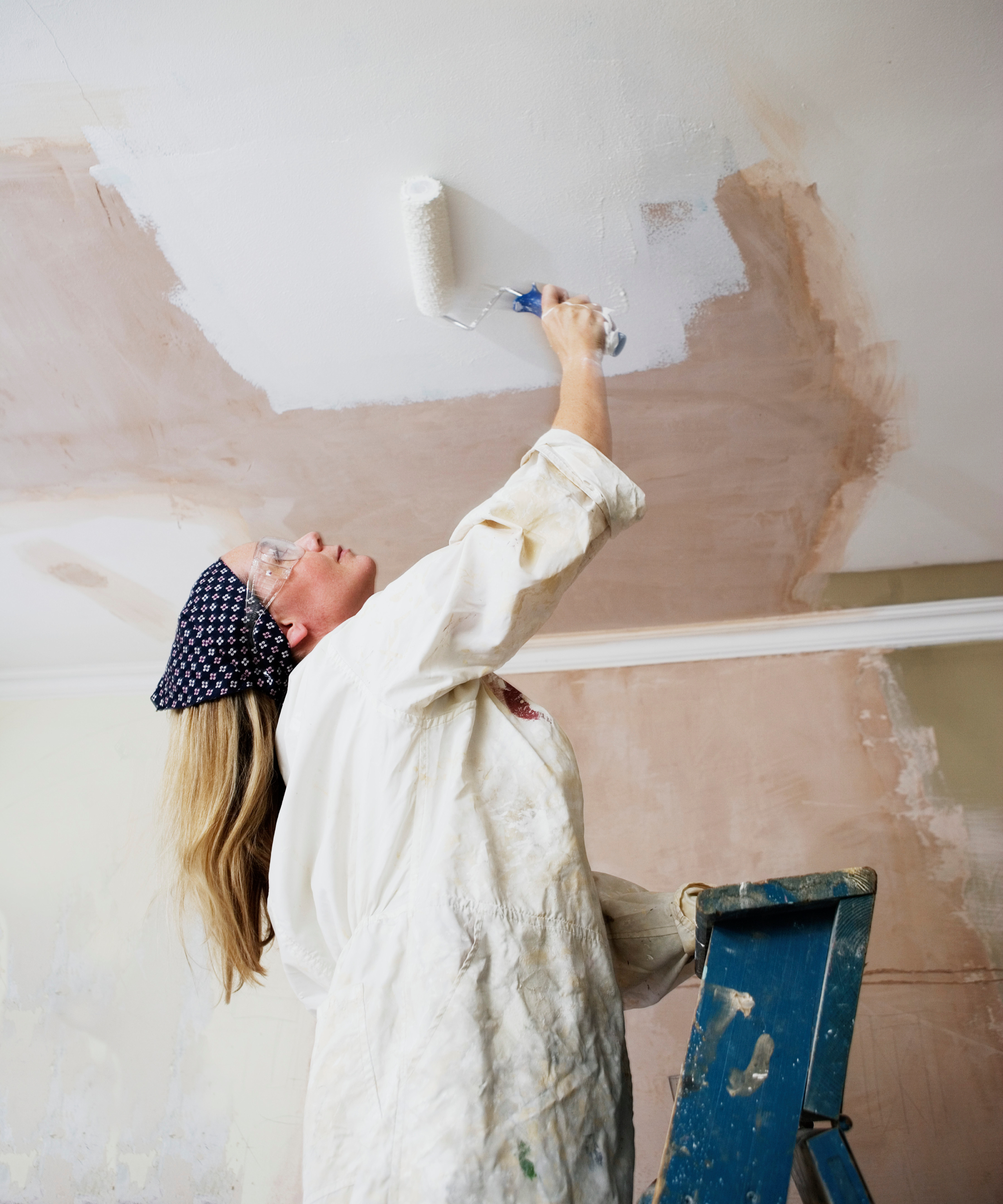
Not encountered mould on your ceiling yet but have spotted it elsewhere? Our guides on how to remove mould from walls without damaging paint and how to remove mould from fabric will help you to sort the problems fast.
Get the Homebuilding & Renovating Newsletter
Bring your dream home to life with expert advice, how to guides and design inspiration. Sign up for our newsletter and get two free tickets to a Homebuilding & Renovating Show near you.

Sarah is Homebuilding & Renovating’s Assistant Editor and joined the team in 2024. An established homes and interiors writer, Sarah has renovated and extended a number of properties, including a listing building and renovation project that featured on Grand Designs. Although she said she would never buy a listed property again, she has recently purchased a Grade II listed apartment. As it had already been professionally renovated, she has instead set her sights on tackling some changes to improve the building’s energy efficiency, as well as adding some personal touches to the interior.
- Amy WillisWeb Editor
